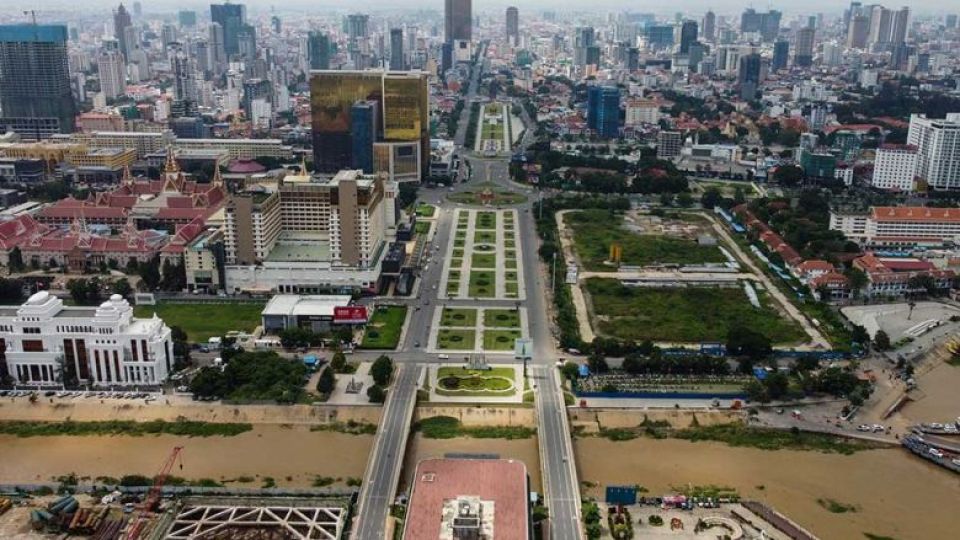November 18, 2022
PHNOM PENH – US global rating agency Moody’s Investors Service Inc on November 15 announced that it downgraded Cambodia’s outlook from “stable” to “negative” and maintained its B2 local and foreign currency issuer ratings.
“The negative outlook reflects a deteriorating external position as illustrated by the severe widening of the current account deficit, which Moody’s expects to remain wide – albeit narrowing – over the next few years, raising financing concerns,” the New York City-based firm said in a statement.
Citing “downside risks” to post-Covid-19 recovery stemming from a “weakening” of growth in the US and EU, Cambodia’s top export markets, as well as in China and other jurisdictions with significant economic ties to the Kingdom, Moody’s says it expects real gross domestic product (GDP) growth to remain below the seven per cent annual average logged in the 2010-2019 decade in “the next few years”.
“However, Moody’s still expects robust growth in Cambodia of 4.5 per cent in 2022 and 5.5 per cent in 2023, a substantial increase from an estimated three per cent growth in 2021.
“Although Moody’s expects concessional funding to continue and foreign direct investment [FDI] to remain stable, other sources of financing remain opaque – highlighting the risk of a quicker erosion of foreign currency reserves than observed until now.
“These risks are compounded by the lack of timely and transparent reporting, which complicates policy setting, indicating elevated credit risks stemming from weaknesses in governance.
“At the same time, a deceleration in activity in the luxury property sector poses broad risks to growth, which will amplify cyclical challenges coming from moderating exports growth in light of the adverse global macroeconomic environment, still low tourism arrivals, and weaker FDI due to tightening international markets and lower global growth.
“The rating affirmation at B2 balances the government’s highly affordable, concessional debt with a weak institutional framework, and elevated domestic political and geopolitical risks,” the statement added.
Anthony Galliano, the group CEO of financial services firm Cambodian Investment Management Co Ltd, told The Post on November 15 that the timing of Moody’s outlook downgrade to negative “is inauspicious given the recent initiative to issue sovereign bonds at very aggressive pricing.
“In fairness, the Kingdom’s current account deficit has been deteriorating, and in fact very substantially in 2021, from 8.49 per cent of GDP in 2020 to 42.53 per cent in 2021. The average value for Cambodia during 1992 to 2021 was 6.9 per cent, the world average in 2021 based on 146 countries is 2.07 per cent, so 42.53 per cent is quite alarming.
“This recent severe depreciation in the current account deficit appears to be an anomaly and not by any means a reflection of any historical pattern. I have in the past mentioned the 40/40/40 problem, whereby the United States is around 40 per cent of Cambodia’s export market, China is in the region of 40 per cent of the imports, and FDI is 40 per cent or more from China, although China’s FDI declined in 2021.
“The concentration risk begs for diversification in trading partners and investment, with a broader spectrum of countries and wider allocations,” Galliano said.
“The United States and China remain key countries to the economy and in this context, both countries are dealing with economic issues, such as in the US grappling with rising interest rates, inflation, government deficits, and a potential recession. China on the other hand is dealing with a sharp decline in growth, a depreciating property market, a lockdown, and difficulties in the banking system.
“I anticipate a substantial improvement in the current account deficit in 2022 as China reopens and FDI resurges. If this is the case the outlook should improve 2023, save any material geopolitical issues which nevertheless will be global not specific to Cambodia,” he added.
Moody’s remarked that it had maintained Cambodia’s local and foreign currency country ceilings at Ba3 and B1, respectively.
“While Cambodia’s foreign exchange reserves have slowly eroded, to $16.1 billion in July, they remain relatively high. However the declining reserves coverage ratio highlights increasing pressure to Cambodia’s external position.
“Moody’s expects Cambodia’s foreign exchange reserves to continue eroding over the next two years, to $15 billion – or 4.8 months of import cover – in 2022 and $13 billion – 3.8 months – in 2023 from $17 billion – 6.2 months – in 2021, as financing sources for the large current account deficit remain unclear.
“As Cambodia has currently no external commercial debt, there are no additional financing risks in that regard,” it added.


